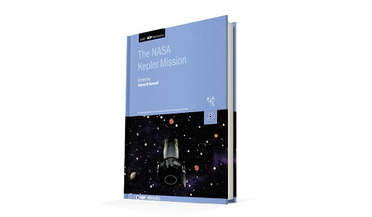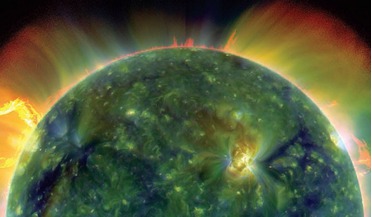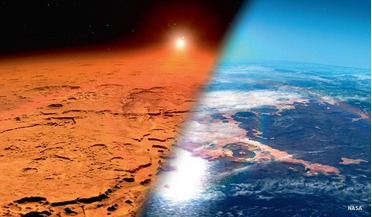 22 June 2021
The NASA Kepler Mission
22 June 2021
The NASA Kepler Mission
... change that because the two missions have made “fundamental, paradigm-changing advances in essentially every area of astrophysics and planetary science”. The Kepler spacecraft was, in effect, a planet hunter. From its launch in 2009, it continuously...
 July 2014
Space technology transfer portals and the chance progress of innovation
July 2014
Space technology transfer portals and the chance progress of innovation
... been developed to test a highly accurate planet-hunting space telescope. One of the most intriguing questions in modern astrophysics is whether the Earth is unique in the universe in its ability to sustain life. To find out, we need to be able...
 July 2014
In thrall to a star: understanding the Sun will help us understand our own climate and environment
July 2014
In thrall to a star: understanding the Sun will help us understand our own climate and environment
.... Solar Irradiance Variability and Climate, Solanki, S.K. Krivova, N.A. and Haigh, J.D. 2013, Annual Review of Astronomy and Astrophysics, Vol. 51: 311-51. Space Weather Observing Systems: Current Capabilities and Requirements for the Next Decade...
 December 2014
MAVEN and the evolution of Mars
December 2014
MAVEN and the evolution of Mars
... Flight Center (GSFC) during the proposal process, together with an instrument team from IRAP (Research Institute in Astrophysics and Planetology) in Toulouse. Lockheed-Martin was to provide the spacecraft, with project development under the guidance...
 June 2015
Finding asteroids before they find us
June 2015
Finding asteroids before they find us
... Space Physics will be the first to review the data, followed by the Minor Planet Center of the Smithsonian Astrophysical Observatory who will then send their findings to NASA’s Jet Propulsion Lab in Pasadena, CA for analysis. Then...
 February 2016
Is Jupiter Really Our Protective Shield?
February 2016
Is Jupiter Really Our Protective Shield?
... Life is Uncommon in the Universe 235-242. 19 Wetherill, G.W. (1994) Possible Consequences of “Jupiters” in Planetary Systems, Astrophysics and Space Science 212: 23-32 20 Levison, H.F., L. Dones, and M.J. Duncan (2001) The origin of Halley-type...